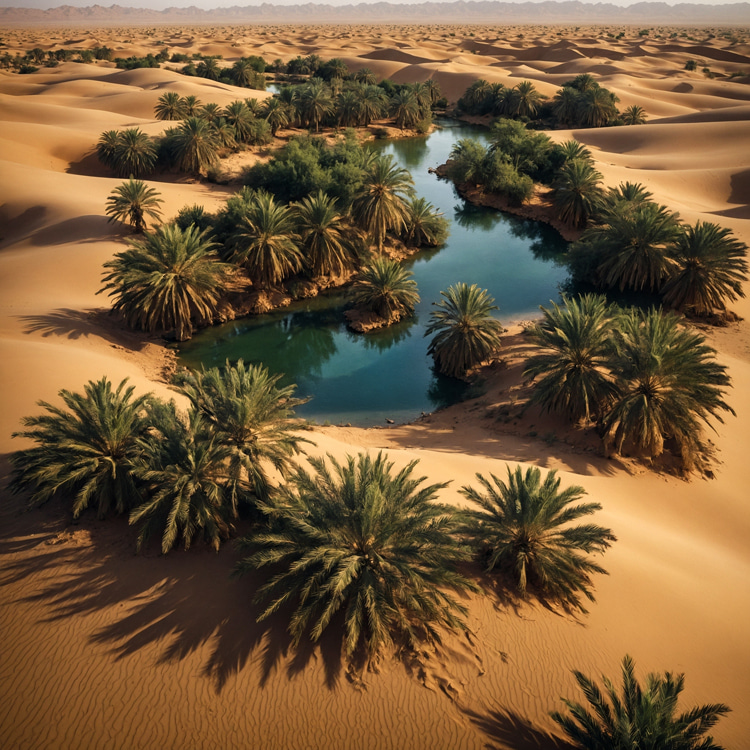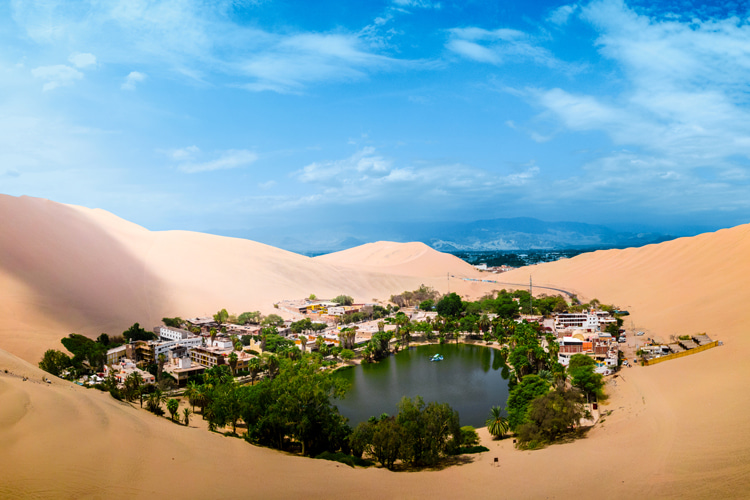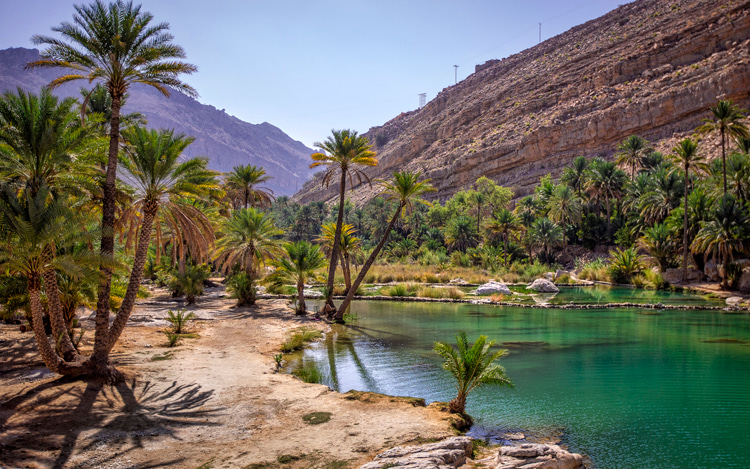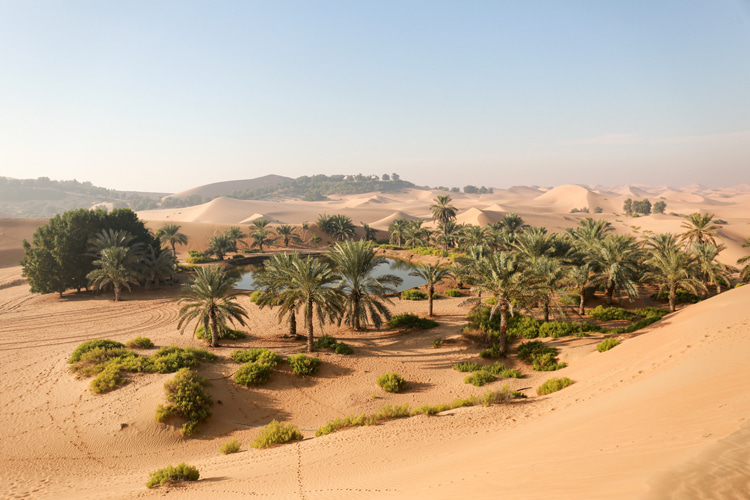They're portrayed in popular culture as mirages that could save a lost soul in a sea of sand and dunes. An oasis might indeed look like a miracle born in the middle of the desert, but they're actually more than that common idea.
An oasis is a relatively limited or circumscribed fertile area in a desert or semi-desert region where water is available, enabling plants, animals, and sometimes human communities to thrive.
These unique and fascinating natural features provide vital resources in otherwise harsh and arid landscapes.
But how are they created and evolved, why are they important, and what do they tell us about Nature's health?
How Does an Oasis Form?
An oasis forms when groundwater or surface water becomes available in an otherwise dry area. There are several ways this happens:
- Natural Springs: Groundwater rises to the surface through faults or cracks in the Earth's crust, creating pools of fresh water;
- Aquifers: Underground water reserves, called aquifers, may be close enough to the surface that wells can tap into them;
- Rainfall Collection: Some oases form in depressions or valleys where sporadic rainfall gathers, although this is rare in extreme deserts;
- Human Intervention: In some cases, human ingenuity has created oases through irrigation systems or qanats - ancient tunnels that channel water from underground sources;

How Does an Oasis Grow?
Oases often start small but can expand over time. Their growth depends on water availability, human activity, and ecological factors.
One of them is vegetation spread.
Once plants like date palms take root, they create microclimates that retain moisture and shield the ground from direct sunlight, encouraging other plants to grow.
Then, there's obviously agricultural development.
People living near oases cultivate crops, dig deeper wells, and develop irrigation systems, which can further enhance the size and utility of the oasis.
Finally, there's natural expansion.
The oasis may naturally expand if water flow increases due to geological changes or seasonal variations.
How Does Water Stay?
The ability of an oasis to retain water is due to several factors:
- Geological Structures: Many oases are located in areas with impermeable rock layers that prevent water from seeping further into the ground;
- Vegetation Cover: Plants like date palms reduce evaporation by shading the soil, helping the oasis conserve its precious water;
- Human Management: Traditional water management systems, such as canals or barriers, help store and distribute water efficiently;
Without these natural and human interventions, water in an oasis would quickly evaporate or drain away.

Why Are They Important?
Oases play a critical role in ecosystems, economies, and cultures.
They are of ecological importance, as they provide habitats for diverse species, from birds and insects to unique desert plants.
As human settlements, oases have supported civilizations for thousands of years, offering water, food, and trade opportunities in arid regions.
They're also fantastic agricultural hubs in deserts, growing crops like dates, olives, and barley.
It is also important to mention their cultural significance, as many oases are steeped in history and serve as cultural landmarks, inspiring stories, religions, legends, and even Hollywood movies.
Famous Oases Around the World
Several oases stand out for their size, history, and significance. Here are some of the most visited examples:
- Wadi Bani Khalid (Oman): It is one of the world's most famous and picturesque oases with its striking turquoise pools, lush greenery, and dramatic landscapes;
- Siwa Oasis (Egypt): Known for its stunning salt lakes, palm groves, and ancient ruins, it has been a vital center since ancient times;
- Al-Ahsa Oasis (Saudi Arabia): The largest oasis in the world, a UNESCO World Heritage Site, famous for its extensive irrigation systems and lush greenery;
- Huacachina (Peru): A picturesque desert oasis surrounded by towering sand dunes, popular for tourism and sandboarding;
- Tafilalt (Morocco): Once an important stop on ancient trade routes, it is one of the largest oases in North Africa;
- Dakhla Oasis (Egypt): A historically significant site with archaeological remains from ancient civilizations;

Lessons We Learn
Oases teach us resilience and the importance of resource management.
They demonstrate how life can thrive in extreme conditions through adaptation, innovation, and care.
A bit like a cactus harnesses humidity from the air and stores it for months.
For humans, they highlight the value of sustainable water use and living in harmony with the environment.
Most Critical Threats
Despite their resistance, oases face numerous threats.
Climate change is certainly the most relevant, as rising temperatures and decreasing rainfall can deplete water sources.
Another problem is the over-extraction of water due to the fact that intensive agriculture and population growth can drain aquifers faster than they can replenish.
Desertification is also a burden because human activity and environmental factors lead to the expansion of deserts, thus engulfing oases.
Pollution caused by industrial activities and poor waste management also threaten the purity of oasis water.
Lastly, it's critical to mention tourism pressure.
It is often witnessed that very touristic oases face overcrowding, litter, and unsustainable tourism practices.
Words by Luís MP | Founder of SurferToday.com


